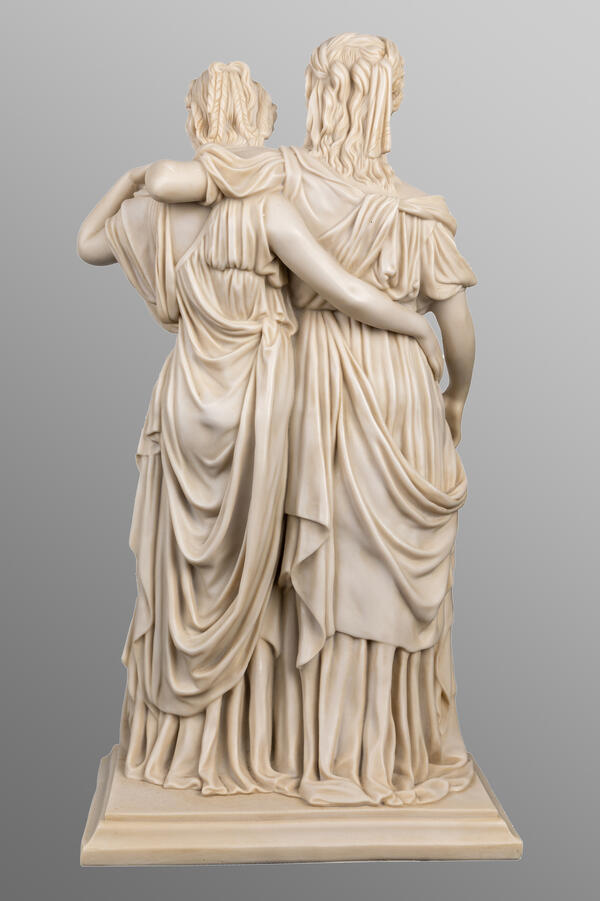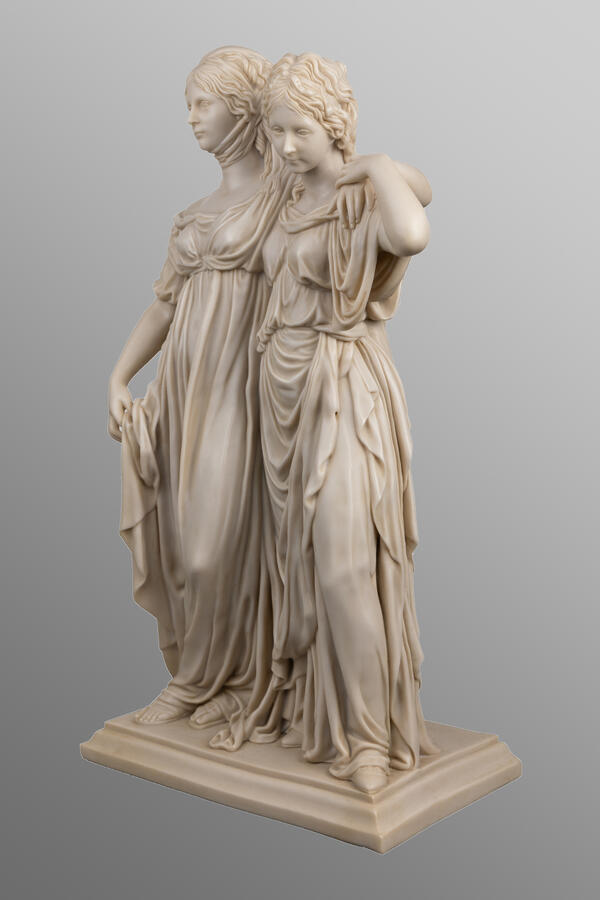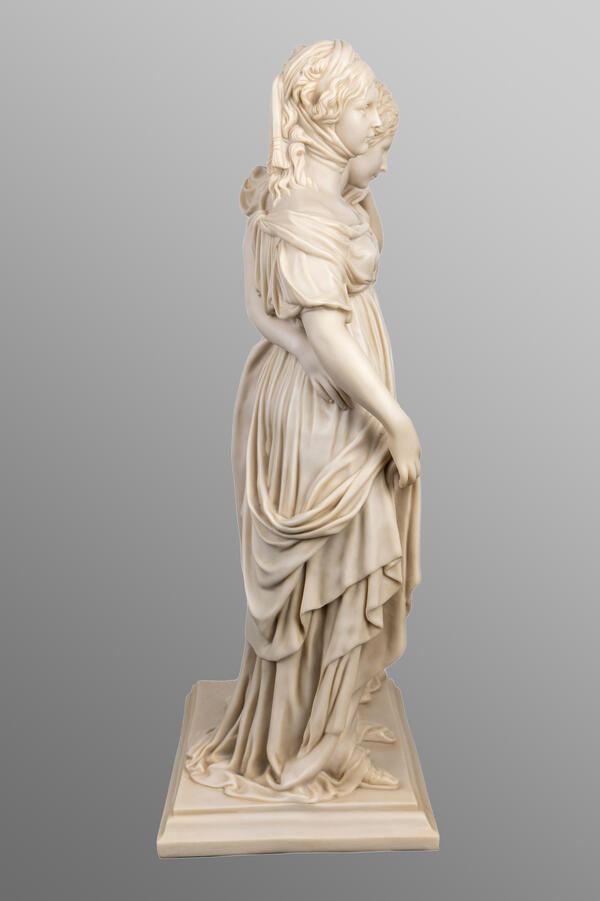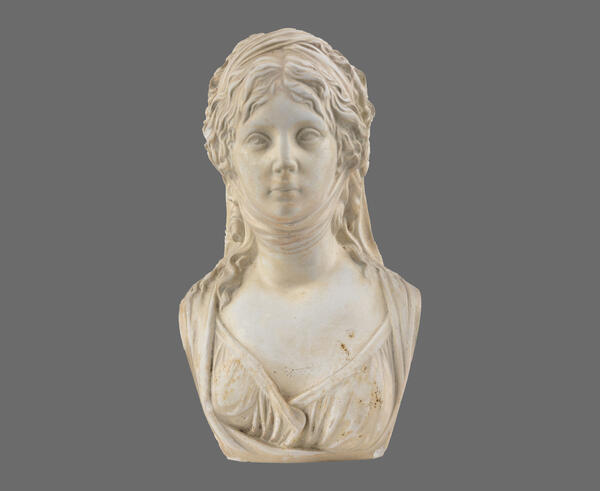Johann Gottfried Schadow was a sculptor, founder of the Berlin school of sculpture, and an outstanding master of the Classicist style. His work was highly valued by his contemporaries. During his lifetime, he was elected a member of many European Art Academies, including those in Paris, Vienna, Munich and Brussels. In his works, Schadow often turned to ancient classical motifs, creating both strict official monuments and the compositions marked by sculptural emotional freedom and delicate personalization of the images.
The “Princesses Group” depicts the future Prussian queen Louise with her younger sister Friederike. Today, along with another famous work by Schadow, the quadriga on the Brandenburg Gate, the “Princesses Group” is considered a masterpiece of early Berlin Classicism and is distributed as an artwork in copies of varying size and quality.
Schadow began work on the “Princesses Group” by making portrait busts of the sisters. After completing the busts in 1795, the sculptor set to work on a double life-size statue of the princesses. This group, made of plaster, was to serve as a model for a series of smaller copies made of porcelain. The life-size sculpture was to appear at an exhibition of the Academy of Arts in September 1795. The vast majority of visitors were delighted with Schadow’s work. The work was completed in marble two years later. It was complemented by a pedestal of gray Silesian marble with two octagonal tablets bearing the names and titles of the princesses. Today the plaster version is in the Friedrichswerder Church, which has been converted to the Schinkelmuseum. The original marble group is in the Old National Gallery in Berlin.
The double statue was praised by experts and the public, but Louise’s husband ignored it. He did not like the lively, natural image in the statue of his wife and the lack of majestic posture in the statue of the Queen of Prussia and her sister. The king gave the sculpture a brief and unequivocal assessment: “It’s killing me!”
In 1886, the sculptural group
was exhibited at the Jubilee Exhibition at the Berlin Academy of Arts, in 1906
— at the Centennial Exhibition at the National Gallery. In 1893, the sculpture
found a new place in the art gallery.






